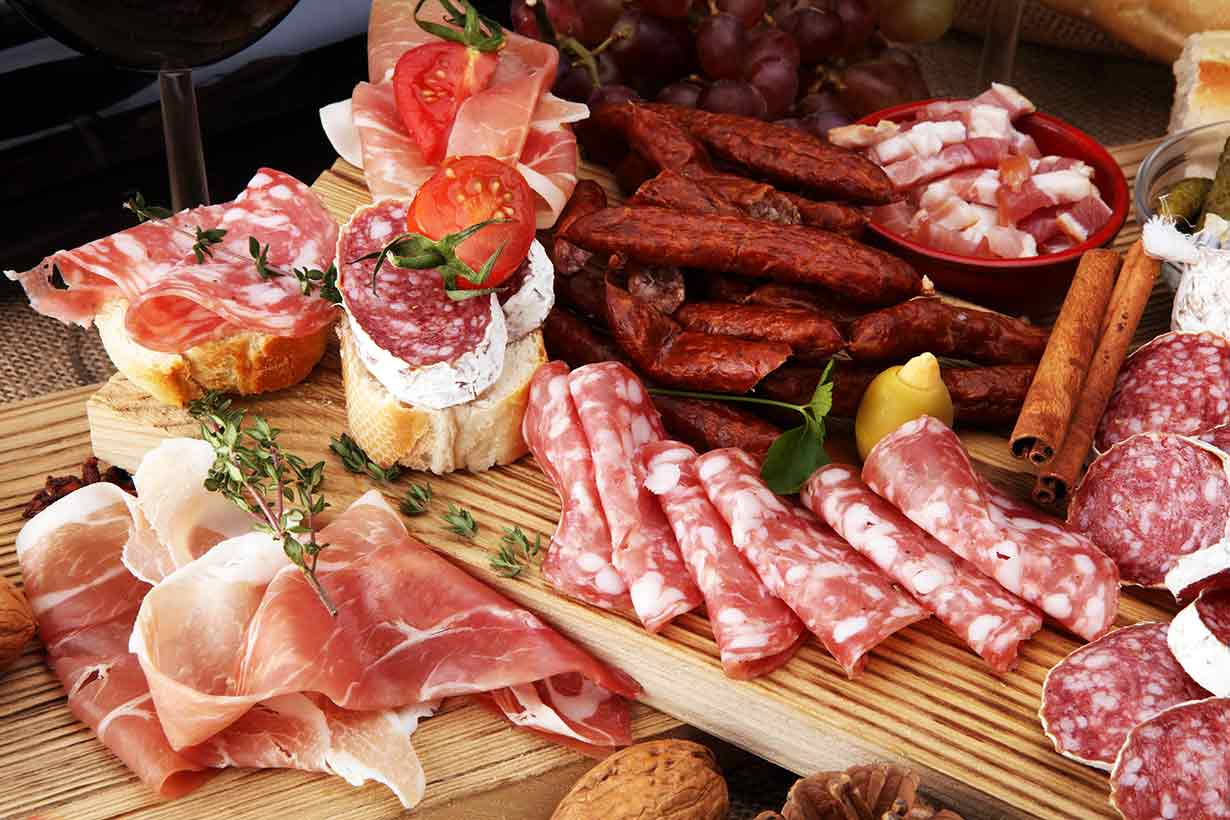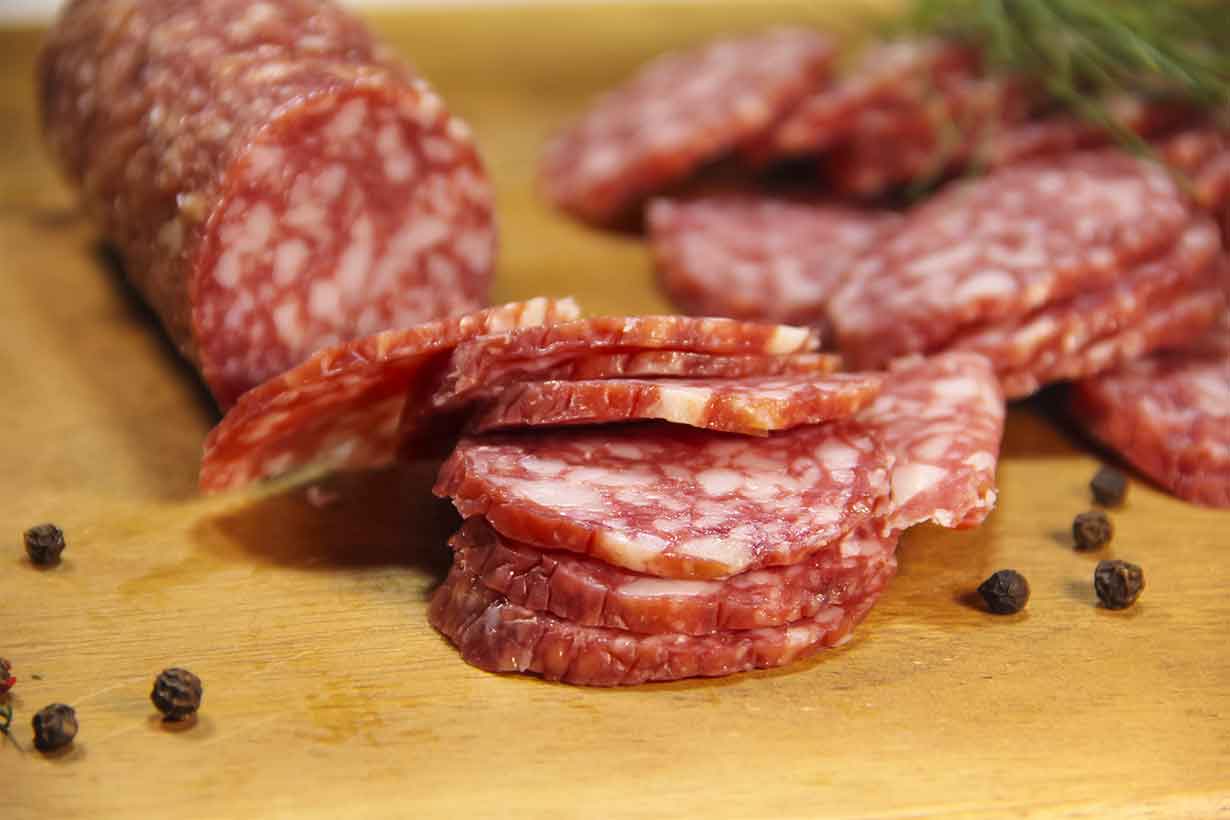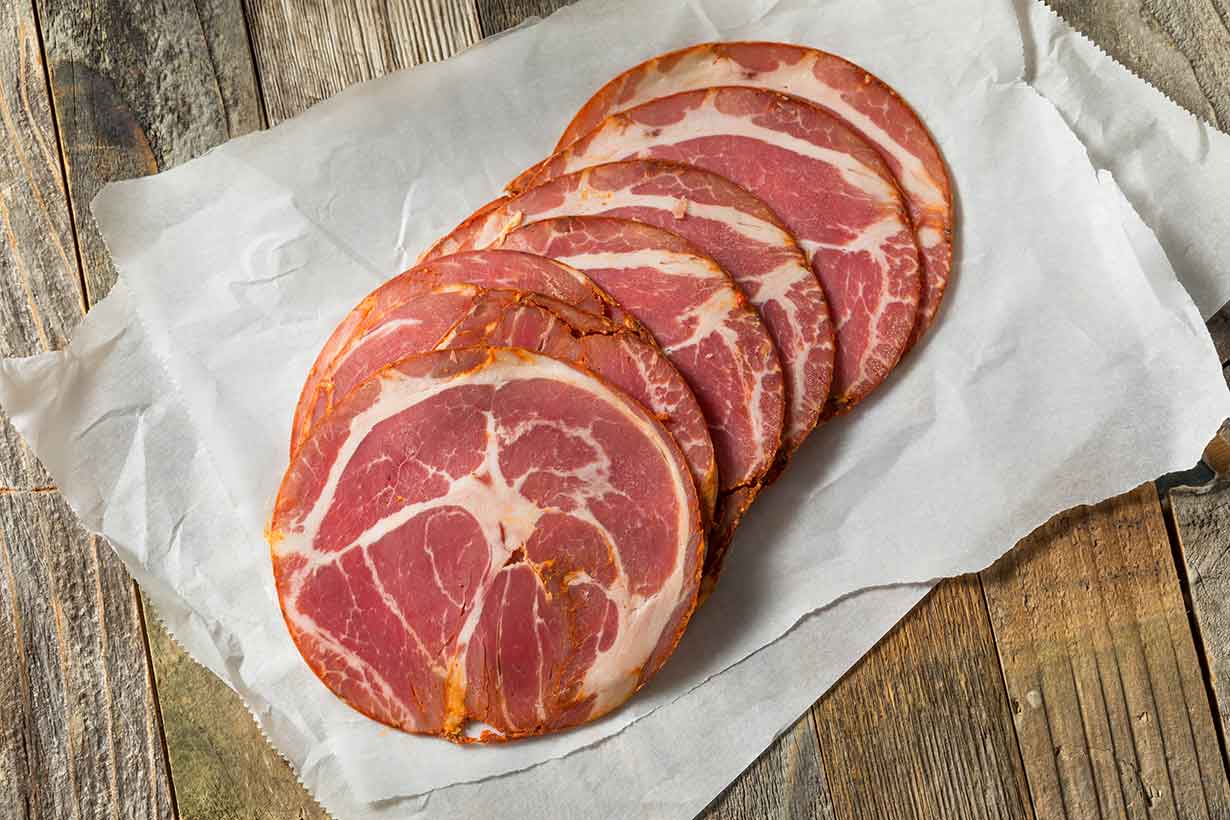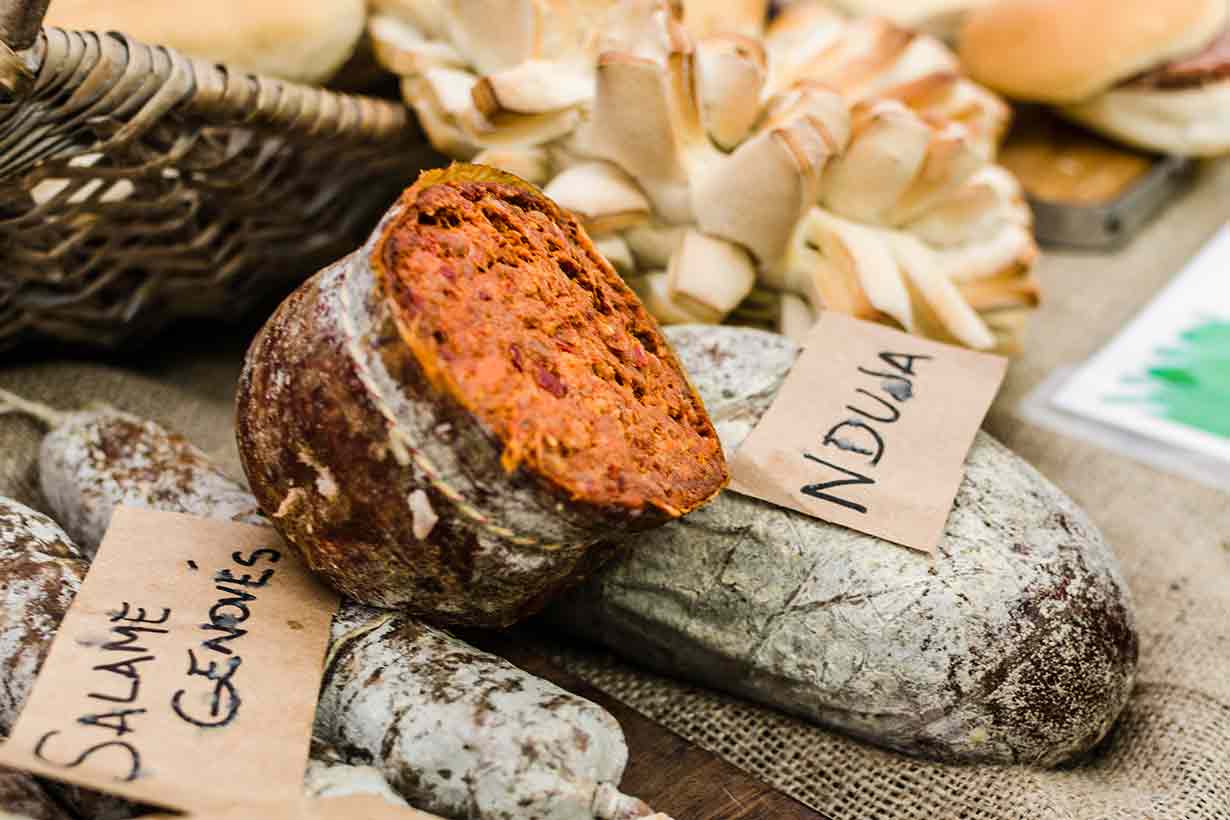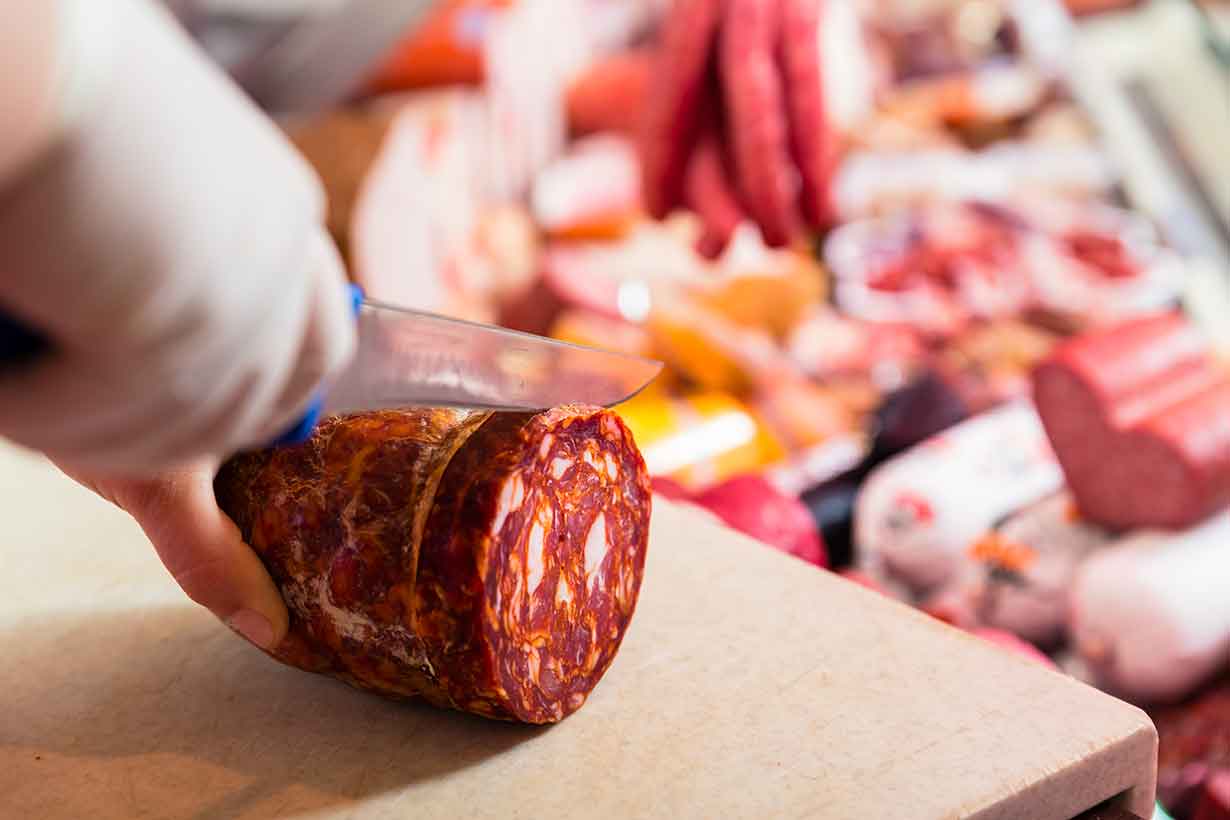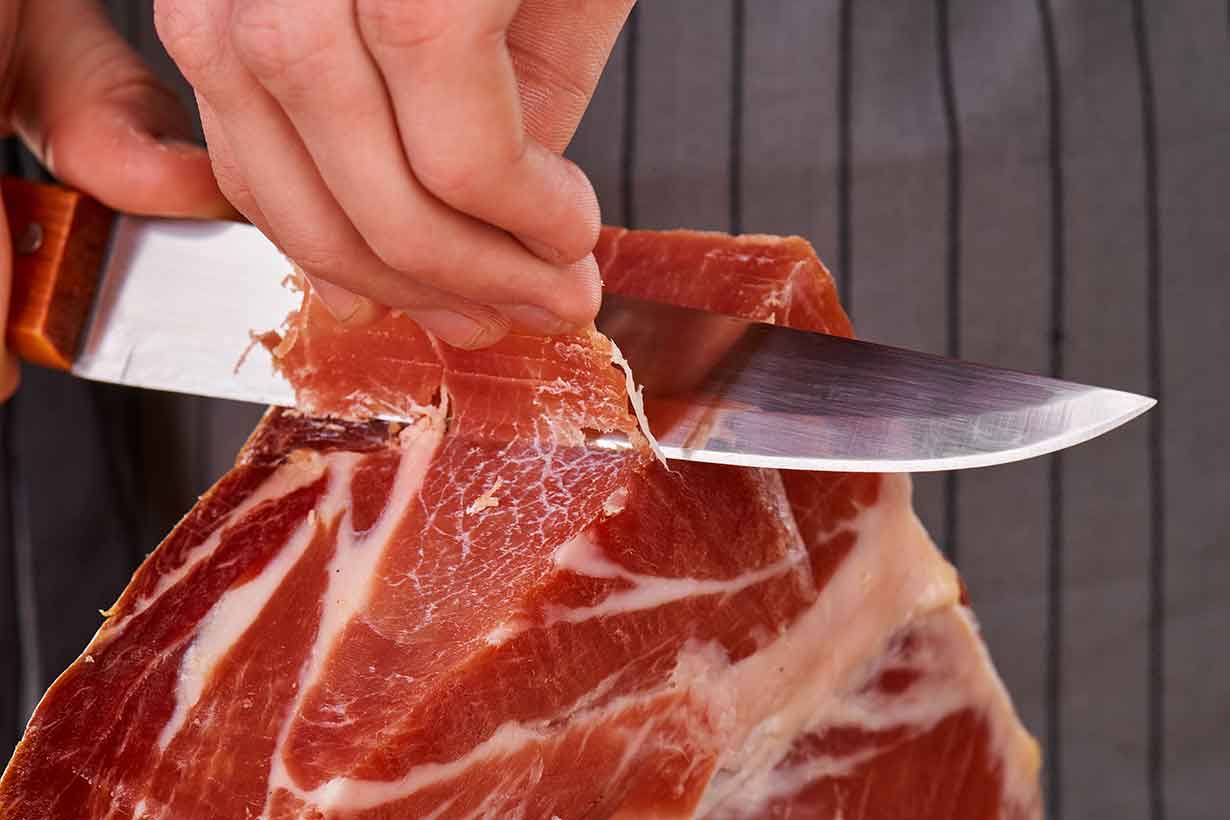Pancetta is an Italian variety of cured meat that is popular around the world.
This article looks at precisely what pancetta is, how it’s made, its nutritional values, and how to use it.
What Is Pancetta?
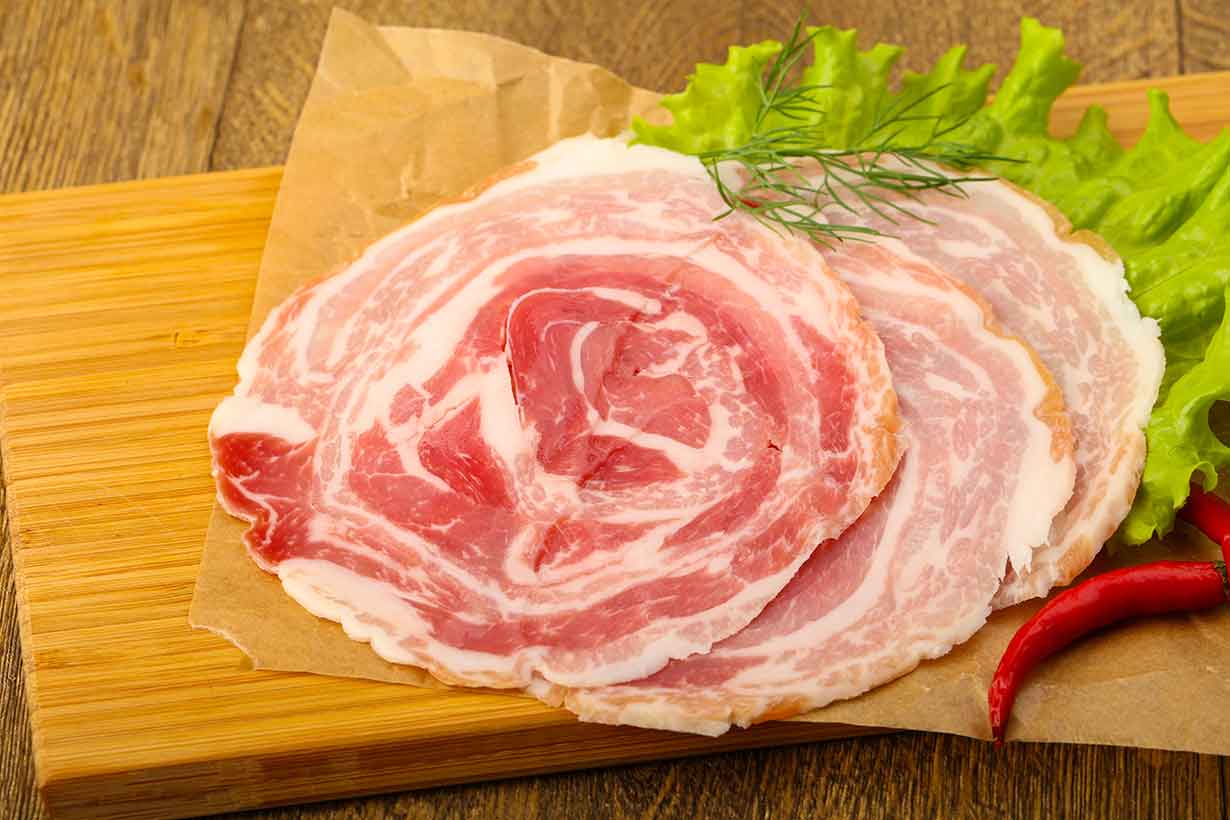
Pancetta is a type of cured meat made from pork belly.
While pancetta has an appearance similar to bacon, the two are relatively different.
Firstly, bacon is cured in salt and often smoked, but it is never dried, and it is still raw meat that always needs to be cooked.
Although some types of pancetta need to be cooked in the same way as bacon, others are both salt-cured and thoroughly dried. For this reason, they can be consumed raw.
There are many different varieties of pancetta, but the meat is most commonly sold in slices or small diced cubes.
Pancetta can either be eaten alone or added to various dishes as a taste-enhancing ingredient.
Taste
Since pancetta and bacon are both processed versions of pork belly, their taste is quite similar. However, pancetta isn’t usually smoked, and it doesn’t have the standout ‘smoky’ taste of bacon.
That said, some versions of pancetta go through a cold-smoking process to give them added flavor notes.
The flavor of pancetta also tends to vary depending on the different herbs and spices that producers may use in the curing brine.
Alongside other pork belly-based cured meats such as ‘nduja, pancetta is one of the fattiest cured meat varieties. This higher fat content also gives it a tender texture.
Ingredients
Pancetta always features pork belly and salt, which are the two main ingredients. Additional ingredients may vary from product to product.
It is not uncommon to find the following ingredients in different varieties:
- Pork belly
- Salt
- Sodium nitrate
- Sodium nitrite
- Dextrose
- Juniper berries
- Rosemary
- Garlic
- Pepper
- Celery powder
How Is Pancetta Made?
The exact production process of pancetta largely depends on the specific variety, and each will slightly differ.
Generally speaking, these are the common production steps:
- After getting the pork belly ready, the skin is removed before the salt-curing process.
- Following this, a brine will be prepared that includes salt and preservatives, such as sodium nitrate. Depending on the specific pancetta product, the brine may also include various seasonings like rosemary and garlic, and potentially sweeteners like dextrose.
- Once ready, the brine will be rubbed over the whole surface area of the pork to ensure an even coating.
- The pork belly will then be wrapped tightly (or placed in an airtight box) and stored in the refrigerator for approximately two weeks.
- After the curing process, the brine will be rinsed away, and then additional spices or seasonings may be added.
- Following this, the pancetta may undergo a drying process, the length of which will depend on whether the meat will be fully dried or not. Only thoroughly dried pancetta can be eaten raw.
For guidance on making pancetta at home, there is a great guide here from Our Daily Brine.
Varieties of Pancetta
Here are some of the most popular types of pancetta that we can find.
Pancetta Arrotolata
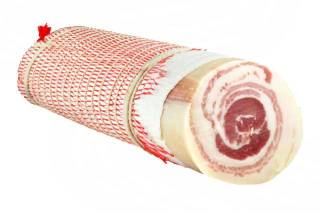
Arrotolata has been rolled into a cylinder shape, cured, and fully dried. As a result, people enjoy this form of pancetta raw.
Pancetta Affumicata
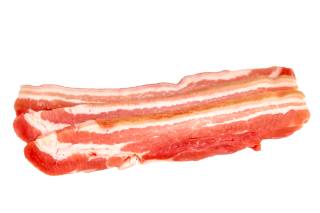
Affumicata undergoes a salt-curing and smoking process before being prepared into slices. This similar process makes it the closest thing to the Italian version of bacon.
However, the taste slightly differs as affumicata also uses a variety of herbs and spices as seasonings.
As pancetta affumicata has not undergone a drying process, it needs cooking.
Pancetta Coppata
Coppata is produced by combining pancetta with coppa (pork neck) and then rolling the two together.
This variety can be consumed raw (1).
Pancetta Cubetti
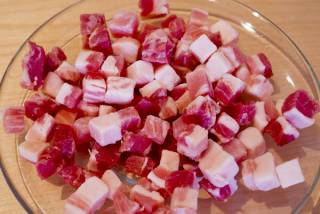
Cubetti is simply pancetta cut into cube-sized pieces ready for cooking.
Pancetta Tesa
Pancetta tesa is similar to arrotolata in that it is both cured and dried.
However, this variety is cut into flat slices rather than being rolled.
Nutritional Values
Using data from the USDA FoodData Central database, here is the basic nutritional profile for a pancetta product by a brand called Daniele International (2).
| Name | Amount |
|---|---|
| Calories | 357 kcal |
| Carbohydrates | 0 g |
| Fat | 32.1 g |
| Saturated | 14.3 g |
| Sodium | 1643 mg |
| Protein | 14.3 g |
Since pancetta is made from pork belly, it offers a good amount of dietary protein.
Furthermore, it is a rich source of B vitamins and minerals such as phosphorus and selenium (3).
Potential Downsides
On the negative side, there are also some potential drawbacks to pancetta.
High Sodium Content
The first of these is the high sodium content; pancetta contains approximately 1643 mg of sodium per 100 grams. This is roughly 70% of the 2300 mg daily sodium limit recommended by the Dietary Guidelines for Americans (2, 4).
Even a moderate 50-gram serving of pancetta would represent around 35% of this recommended figure.
While sodium is an essential electrolyte mineral with important functions, excessive intake can potentially lead to increases in blood pressure.
In this regard, several recent systematic reviews show that excessively high sodium intake can raise blood pressure. Chronically increased blood pressure is a risk factor for cardiovascular disease (5, 6, 7).
Since sodium and potassium work together to regulate blood pressure, high sodium intake may be particularly problematic for individuals not consuming enough dietary potassium (8, 9, 10).
Additionally, very high sodium intakes can have a significant impact on the blood pressure of individuals with salt-sensitivity hypertension (11, 12, 13).
Nitrosamines
The use of preservatives in cured meats such as pancetta is vital to prevent the emergence of foodborne pathogens. However, these preservatives can potentially lead to the generation of nitrosamines (14).
Nitrosamines are organic compounds that form from nitrites reacting with secondary amines (15).
Nitrites can be found (or formed) from preservatives such as sodium nitrate and sodium nitrite, while amines are present in sources of protein like meat.
The nitrosamine-forming reaction is more likely to occur in the presence of high temperatures. For example, in one particular study, frying bacon at either 171°C or 210°C led to the formation of nitrosamines, but microwave cooking did not (16).
Nitrosamines can potentially lead to carcinogenic activity in the body. Some researchers believe this may explain the association between processed meat intake and colorectal cancer risk in population-based observational studies (16, 17, 18).
However, it is worth noting that nitrates and nitrites can also have potential benefits due to their ability to provide the body with nitric oxide (19, 20).
Future research should more clearly ascertain the potential health effects of using nitrates and nitrites as preservatives.
How To Use Pancetta
There are many different ways to use pancetta, but here are some of the most common ideas:
- Use raw (dried) pancetta as part of a cheese platter alongside cheese, fruit, and other cured meats such as jamón and chorizo.
- Wrap vegetables such as asparagus and parsnips in sliced pancetta and then roast them in the oven.
- Add chopped up pancetta (or pancetta cubetti) to soups and stews to enhance the flavor.
- Use pancetta slices as a bacon replacement in various dishes (e.g. carbonara or bacon with sprouts).
- Make a salad; try combining pancetta with leafy greens, ricotta cheese, cherry tomatoes, olive oil, and balsamic vinegar.
These are just a handful of ideas. For more ideas on how to use this cured meat, there is a wide variety of recipes available here.
Where To Buy Pancetta
The best place to find the most authentic, traditional pancetta would be an Italian butcher or deli if there are any local options.
Additionally, it should be possible to find cheaper, ready-packaged pancetta in larger grocery stores. In most cases, this will be the sliced and diced pancetta rather than the more expensive rolled variety.
Final Thoughts
Although fresh pork belly is probably a healthier choice, pancetta is a traditional cured meat that offers a lot in the taste department.
This Italian cured meat is a popular ingredient in platters and dishes around the world due to its delicious flavor.
When used in moderation, there is no reason why pancetta can’t fit into a healthy dietary pattern.

